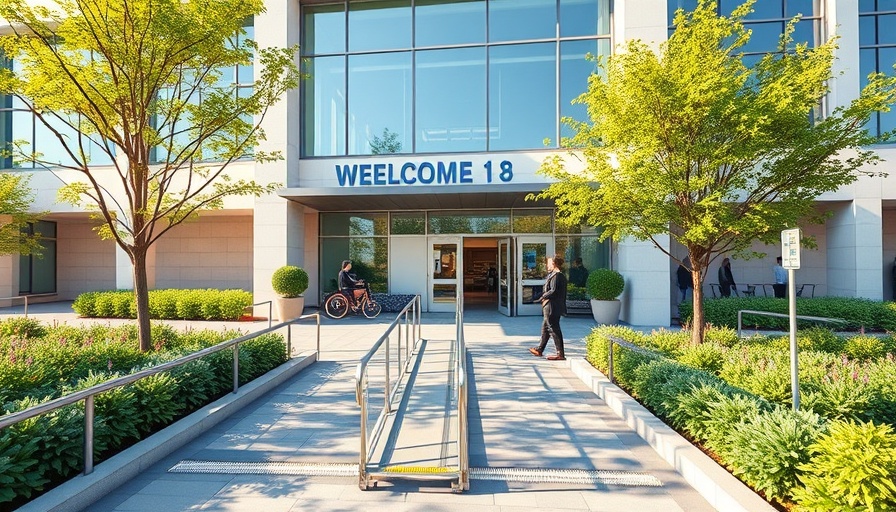
Understanding the Importance of Compliance in New Jersey's Bathrooms
Ensuring compliance with New Jersey’s standards for wheelchair-accessible bathrooms transcends mere legal obligation; it embodies a profound moral commitment to inclusivity and accessibility. As we create spaces that serve everyone, we must acknowledge the groundwork laid by regulatory frameworks such as the Americans with Disabilities Act (ADA) and the New Jersey Uniform Construction Code.
These regulations are pivotal not only in dictating minimum design standards but also in fostering a sense of community and equal opportunity. Stakeholders—from architects to property owners—have the responsibility to embrace these guidelines, crafting environments that are welcoming for all, notably for individuals navigating mobility challenges.
The Legal Framework Supporting Accessibility
Certainly, the first step toward navigating compliance is understanding the legal frameworks governing wheelchair-accessible bathrooms. The ADA mandates certain fundamental requirements for access but is supplemented by the New Jersey Uniform Construction Code, which tailors those requirements to address state-specific needs. This dual-layer of regulatory guidance ensures that stakeholders are equipped with the knowledge to provide truly functional and considerate bathroom facilities.
Comprehending these regulations is crucial not only for compliance but for cultivating goodwill and avoiding potential legal challenges. For architects and contractors, knowing how both state and federal standards interact will lead to more thoughtful design and construction practices.
Essential Features of Wheelchair-Accessible Bathrooms
When we talk about key features of wheelchair-accessible bathrooms, several elements are paramount. First, the layout must incorporate sufficient space for comfortable wheelchair maneuverability; ideally, a minimum turning radius of 60 inches is recommended. Clear floor space in front of fixtures should also be maintained, ensuring no barriers impede access.
Doors play a crucial role in access as well; they need to be wide enough, generally requiring a minimum opening of 32 inches. We can’t overlook the importance of fixture height: sinks, toilets, and other amenities must cater to varying user needs. Installation of grab bars at strategic points, like near toilets and showers, significantly enhances safety and usability.
Significance of Safety and Usability Features
In addition to spatial arrangements, the nature of materials used in bathrooms contributes to user safety. Slip-resistant flooring and fixtures help minimize falls, a significant concern especially in public restrooms. Furthermore, it’s essential to recognize the importance of signage within these spaces. Compliance with the ADA necessitates that appropriate signage is utilized, including braille and tactile indicators that assist those with visual impairments.
Going Beyond Compliance: The Value of Accessible Design
While meeting regulatory standards is critical, the heart of accessible design lies in enhancing user experience. When facilities are designed with thoughtfulness, they not only adhere to legal mandates but also transcend those boundaries towards truly welcoming environments. This approach fosters community spirit and builds trust between service providers and users. It’s important for businesses and public entities alike to embrace this ethos, leading to positive recognition and ongoing patronage.
The Road Ahead: Future Considerations for Accessibility
As we look to the future, the commitment to accessibility will continue to evolve. A growing emphasis on inclusivity across all sectors signals that compliance should not merely be viewed as a checkbox exercise. Innovations in design, techniques, and materials will pave the way for bathrooms that accommodate not only current legal standards but also the evolving needs of users.
A call to action for businesses is to regularly review and assess their facilities against both current regulations and best practices within the industry. Active engagement with the community can offer fresh insights while demonstrating that the commitment to accessibility is a priority rather than a requirement.
Conclusion: Creating Legacy Through Compliance
In summary, navigating New Jersey’s standards for wheelchair-accessible bathrooms involves more than just adherence to laws; it calls for a proactive approach to design and facility management. By deeply understanding and valuing these regulatory frameworks, stakeholders can create engaging, safe environments that reflect a genuine commitment to community inclusivity. Let us move beyond compliance and embrace the opportunity to enhance lives through thoughtful, accessible design.
For those navigating the complexities of regulatory compliance, remember: the foundation you build today shapes the inclusivity of our spaces tomorrow. Reach out to professionals who can assist in your journey to create welcoming environments that respect and serve all individuals.
 Add Row
Add Row  Add
Add 




Write A Comment